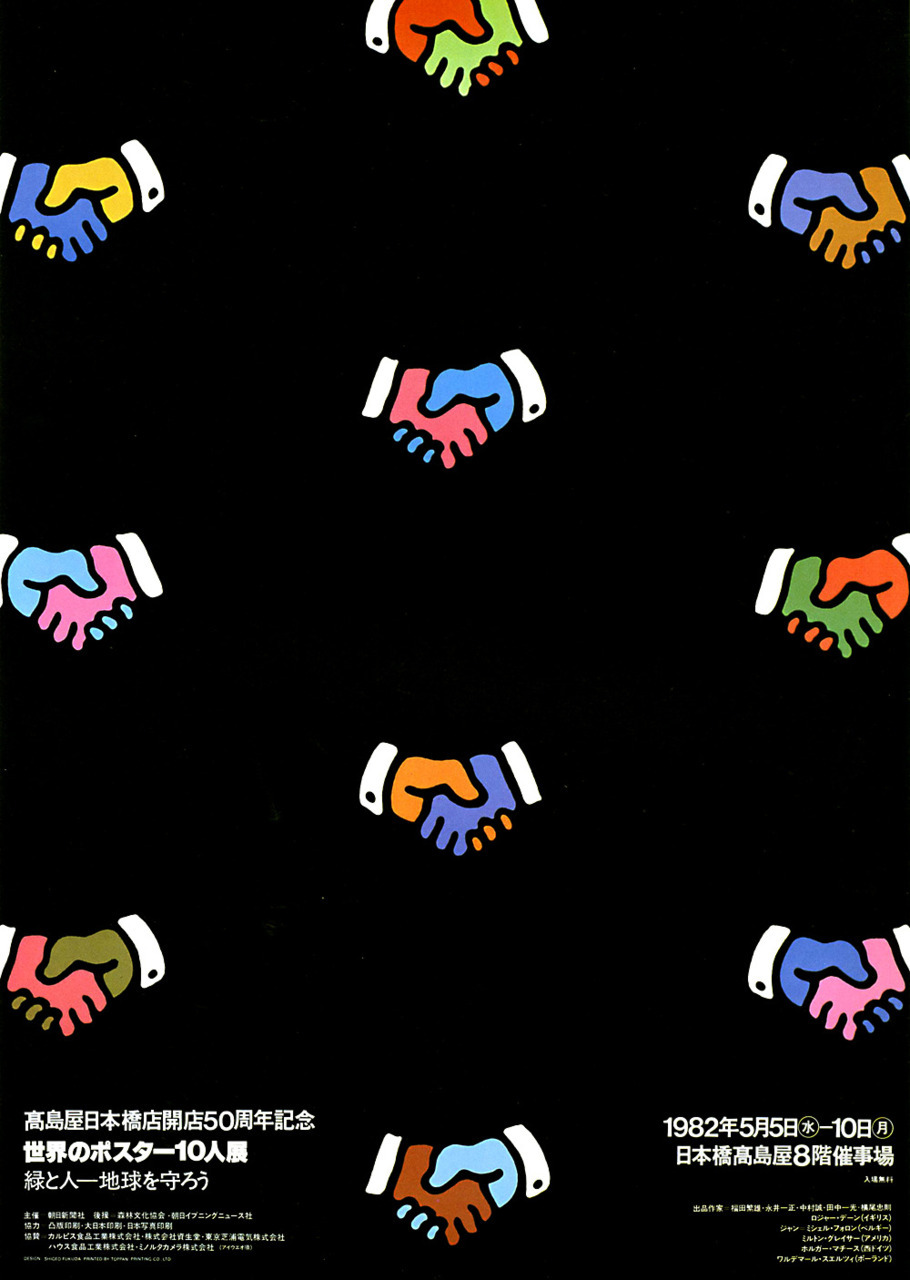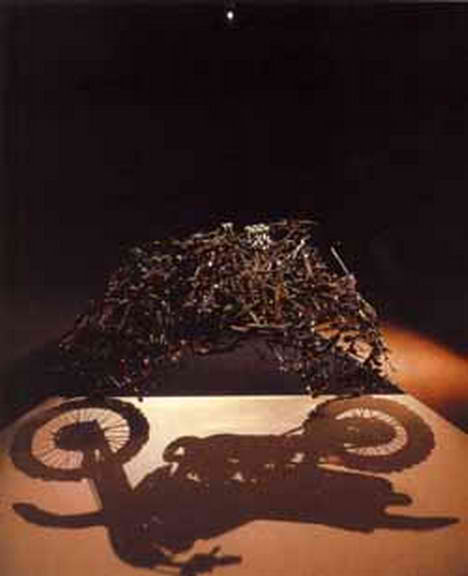Shigeo Fukuda was born in tokyo on the 14th of January 1932.
He was a sculptor, graphic artist and poster designer who was renowned for creating optical illusions in his work. His interest in the minimalism of Swiss design lead him down the route of creative arts, graduating from the Tokyo National University of Fine Art and Music in 1956.
His simplistic design incorporated such power by the complex concepts behind them, which was the reasoning behind why he gained such recognition and popularity.
In 1966, his work first gained prominence at a Czechoslovakian graphic design competition. One year later, Fukuda's work graced many posters specially commissioned for Montreal's Expo '67.
It wasn't until later in that year however, that Fukuda's career began to snowball. Fellow Hall of Famer Paul Rand initially caught sight of his work in an issue ofJapanese Graphic Design Magazine. Realizing Fukuda's great potential as a world-class designer, Rand helped arrange his first United States exhibition at New York City's IBM Gallery. This, incidentally, also coincided with Fukuda's honeymoon and his first trip to New York! The exhibit featured his extraordinary, puzzle-like wooden sculptures originally created as playthings for his young daughter. His successful gallery exhibit brought Fukuda even more widespread recognition, resulting in Rand's interview with him on Public Television.
During the 1960's, Shigeo Fukuda became interested in illusionism.
When it comes to illusionism, Fukuda practices what he preaches. The countless awards he continues to win worldwide are a living testament to his power of graphic legerdemain. Fukuda's brand of magic and illusion never ceases to amaze and enchant.
In an Idea Magazine interview, he explains the motivation behind his technique:
"I believe that in design, 30% dignity, 20% beauty and 50% absurdity are necessary. Rather than catering to the design sensitivity of the general public, there is advancement in design if people are left to feel satisfied with their own superiority, by entrapping them with visual illusion."
Contrary to Western styles of expression, Japanese communication is more emotional than rational. Such emotion is profoundly linked to art. Fukuda dramatically shatters all cultural and linguistic barriers with his universally recognisable style.
Shigeo Fukuda's sense of high moral responsibility as a graphic designer is undertaken with firm conviction. His work effectively mirrors and embraces the worldly causes he believes in. Coupled with his fine flair for color and layout, along with advanced Japanese reproduction techniques, Fukuda always manages to get his points across.
Shigeo Fukuda's abundance of talent goes far beyond his fabulous poster designs. In 1976, Tokyo's Seibu Department Storecommissioned him to re-design areas of its selling floors. Fukuda rose to the occasion with flying colors. He created shopping rest areas disguised as huge leather briefcases. He linked the store's main wings with gigantic, intricate floor mosaics of Lincoln and Beethoven. The piece de resistance was, however, a rooftop beer garden complete with eighty model sheep grazing to the piped-in strains of Country & Western music.
Fukuda took his keen sense of design even further with his remarkably futuristic UCC Coffee Pavilion in Tokyo. The entire theme is coffee. From floor to ceiling, the UCC Coffee Pavilion is a swirling marvel of synergistic design. Whether it's the simplicity of the logo, the mixed-media sculpture of Mt. Fuji made of hundreds of coffee cans, the multi-colored, expressionless mannequins holding steaming cups of coffee or the countless burlap sacks containing the mythical bean, Fukuda has created one of the most spirited design wonders the world will see. One can, just by looking at it, smell the delicious aroma of fresh, roasting coffee beans.
Such inventiveness also 'spills' over into Fukuda's home as well. His lawn, shaded by a plastic, fried egg, is adorned with deceptively realistic bulldog sculptures. Inside, he lived in a Rube Goldberg world of gadgetry no doubt helping him express his peerless individuality.
Examples of Fukuda's work:
His commercial work included his creation of the official poster for the 1970 World's Fair in Osaka. A 1980 poster created for Amnesty International features a clenched fist interwoven with barbed wire, with the letter "S" in the word "Amnesty" at the top of the poster formed from a linked shackle. "Victory 1945", one of his best-known works, features a projectile heading straight at the opening of the barrel of a cannon. A pair of posters created to celebrate Earth Day include a design showing the Earth as a seed opening against a solid sea-blue background and "1982 Happy Earth Day", which shows an axe with its head against the ground and a small branch sprouting upwards from its handle.
In 1987, Fukuda was inducted into the Art Directors Club Hall of Fame in New York City, which described him as "Japan's consummate visual communicator", making him the first Japanese designer chosen for this recognition. The Art Directors Club noted the "bitingly satirical commentary on the senselessness of war" shown in "Victory 1945", which won him the grand prize at the 1975 Warsaw Poster Contest, a competition whose proceeds went to the Peace Fund Movement.
Amnesty:
Victory 1945:
Earth day poster designs:
Other work:
Sculpture:
Why does Shigeo Fukuda interest me?
My interest in the work of Shigeo Fukuda lies in the undeniable talent and intelligence of the man himself. He mixes his experiences and beliefs with his design skills to produce work which is individual, intelligent and original.
Sources:
'http://www.adcglobal.org/archive/hof/1987/?id=235'
'http://www.yaneff.com/html/plates/hl_30.html'
'http://vangeva.com/shigeo-fukuda/'
'http://www.designishistory.com/1960/shigeo-fukuda/'
'http://en.wikipedia.org/wiki/Shigeo_Fukuda'

















No comments:
Post a Comment